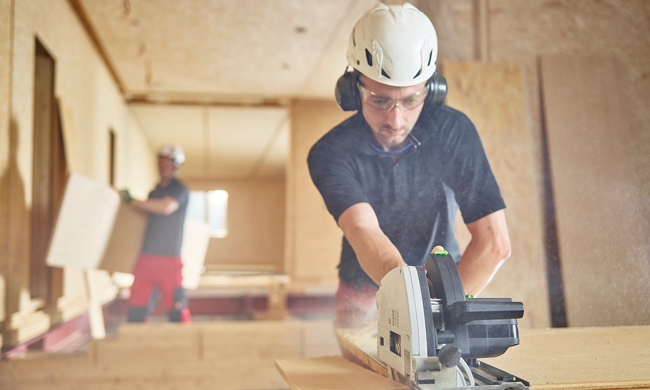Tips for using power tools like a pro
(Family Features) From quick DIY repairs around the house to contractors on the jobsite, power tools can make nearly any job faster and easier. However, having the know-how to put power tools to use is only half the challenge.
Take a safety-first approach to projects big and small with these tips from the Power Tool Institute, the leading organization for power tool safety resources, information and education.
Start with a safe workspace. Keep your work area clean and well lit. Cluttered benches and dark areas invite accidents. Do not operate power tools in explosive atmospheres or near flammable liquids, gases or dust. Power tools sometimes create sparks, which can ignite flammable materials. Also keep bystanders, children and visitors away when using power tools, as distractions can affect your control.
Be careful with battery power. Lithium-ion batteries have become more popular due to their higher efficiency, larger energy storage capacities, convenience and durability. These attributes make them ideal for cordless power tools but also pose additional safety risks when misused. Do not subject them to physical abuse or allow ingress of liquids. Always choose batteries from the original power tool manufacturer, which are engineered to work optimally with corresponding power tools. Aftermarket or third-party batteries may not include all the safety design features and are not always tested to the same safety standards, making them potentially more dangerous and increasing the risk for fire, property damage or personal injury.
Safe transportation and disposal of lithium-ion batteries is also crucial; avoid contact with metal objects, such as keys, coins, screws or nails. To safely dispose of used lithium-ion batteries, take them to a local recycling center or place in a receptacle specially designed for recycling batteries. Do not place batteries in curbside trash or recycling bins. If the battery is damaged, contact the manufacturer for further instructions.
Honor safe practices from start to finish. Use the right tool for your job, and only use accessories specifically recommended by the tool manufacturer. Accessories that are incorrectly sized or incompatible cannot be properly guarded or controlled, and accessories running faster than their rated speed can break and fly apart. Always make sure the accessory has come to a complete stop before putting the tool down and remove the battery from the tool before changing or adjusting the accessory or when cleaning the tool.
Properly store when not in use. To avoid accidental activation, unplug the cord and remove batteries when a tool is not being used. Also be sure to keep tools away from children and people unfamiliar with operating them.
Find more information on safe battery use at TakeChargeOfYourBattery.com, and visit PowerToolInstitute.com for additional power tool safety and operation tips.
Photo courtesy of Getty Images
SOURCE:
Power Tool Institute




No comments:
Post a Comment